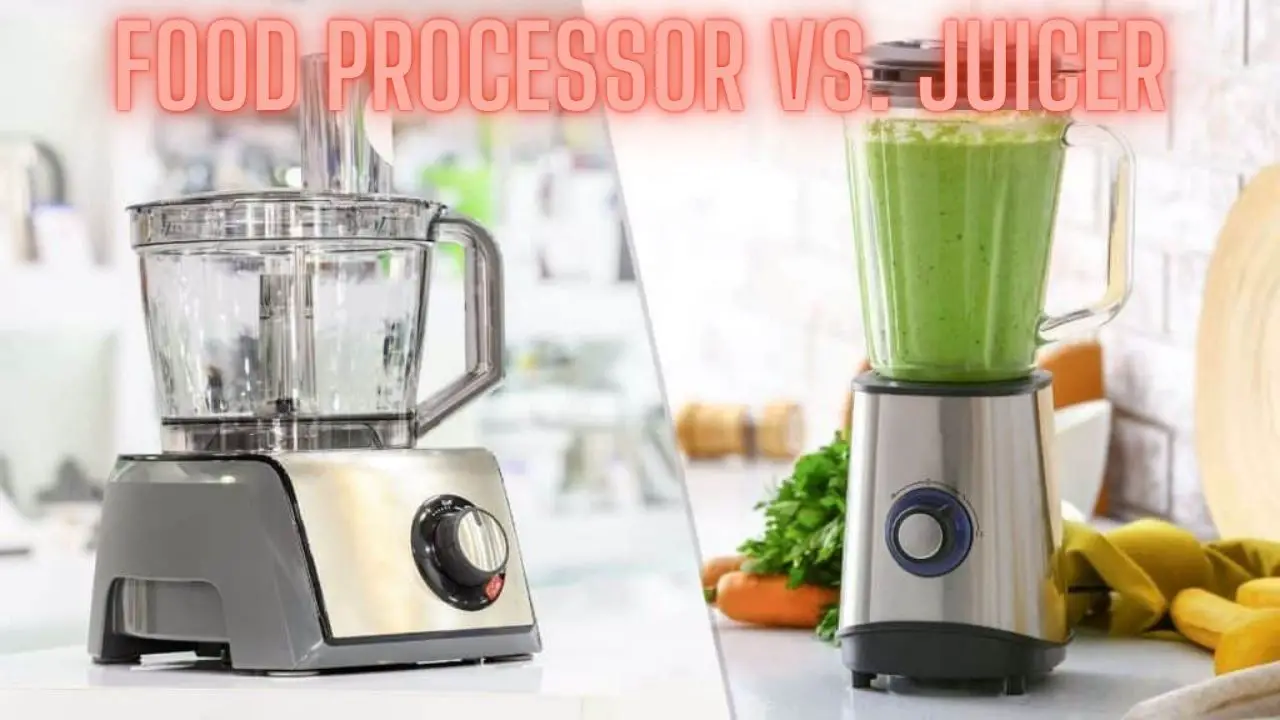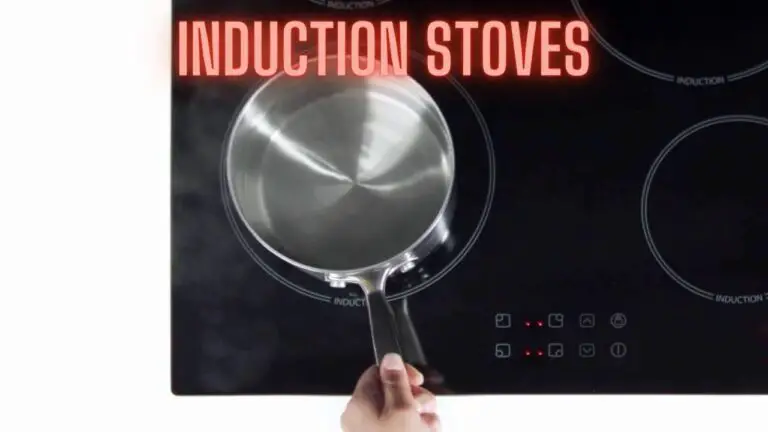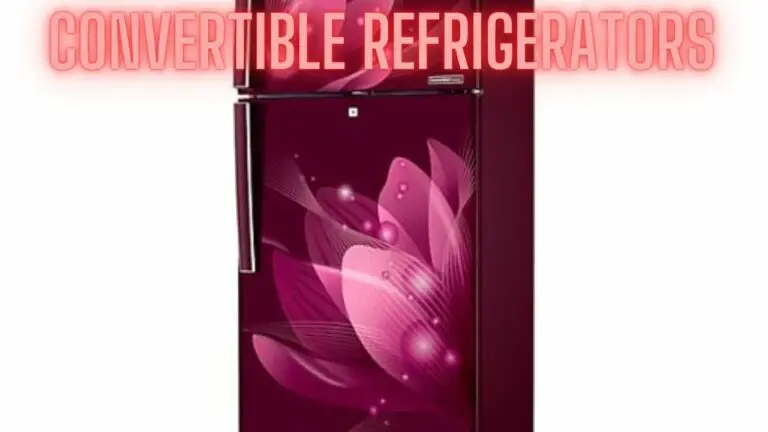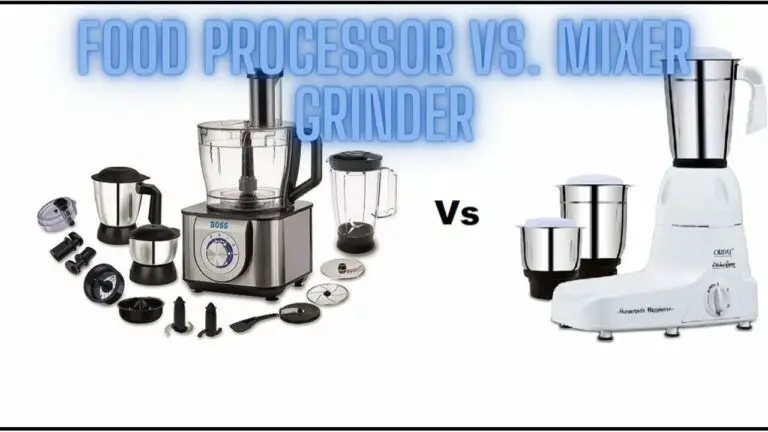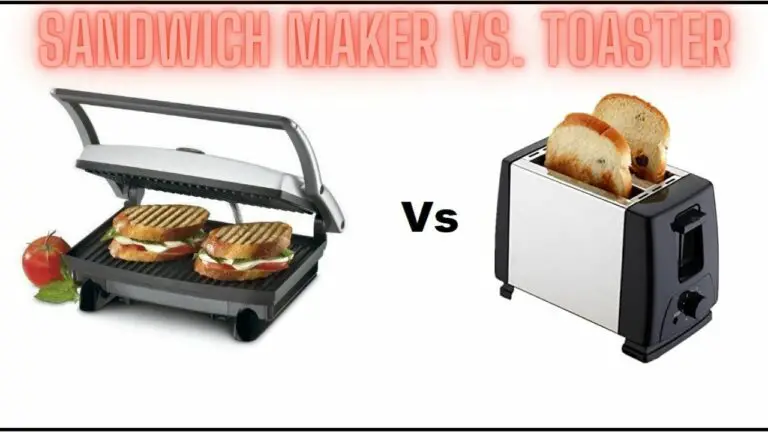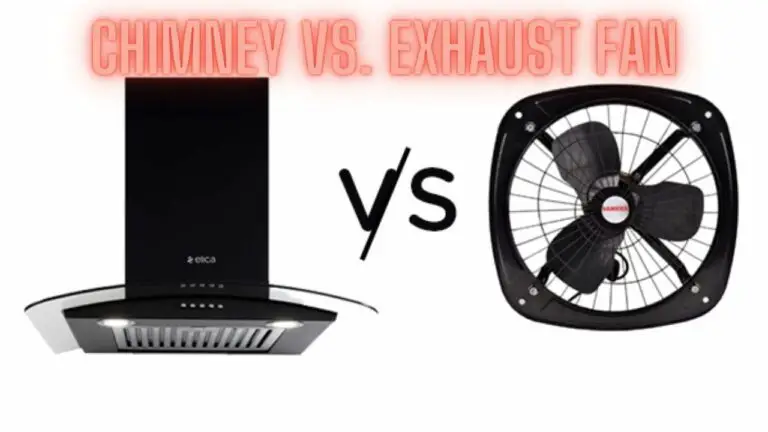Food Processor vs. Juicer: Which Kitchen Appliance is Right for You?
Introduction
Food processors and juicers are two popular kitchen appliances that offer convenience and versatility in food preparation. While both appliances serve distinct purposes, they are often confused due to their similar appearances. In this guide, we will explore the differences between food processors and juicers, highlighting their unique features, functions, and suitability for various cooking tasks. By understanding the differences between these appliances, you’ll be better equipped to choose the right one for your culinary needs and preferences.
Basic Functionality
Food Processor:
A food processor is a versatile kitchen appliance designed to perform a variety of food preparation tasks. It typically consists of a motorized base with a large bowl and various interchangeable blades, discs, and attachments. The primary function of a food processor is to chop, slice, shred, puree, knead, and mix ingredients quickly and efficiently. It can handle a wide range of tasks, including chopping vegetables, grinding nuts, making dough, pureeing sauces, and blending ingredients for dips and spreads.
Juicer:
A juicer is a specialized kitchen appliance used to extract juice from fruits, vegetables, and other produce. It consists of a motorized base with a feeding chute, a rotating blade or auger, and a strainer or filter to separate the juice from the pulp. The main function of a juicer is to extract liquid from fruits and vegetables, leaving behind the fibrous pulp. Juicers are designed specifically for juicing tasks and are not suitable for other food preparation functions like chopping or blending.
In summary, while both food processors and juicers are kitchen appliances that process food, they have different basic functionalities. A food processor is versatile and can perform a wide range of food preparation tasks, while a juicer is specialized for extracting juice from fruits and vegetables.
Operation and Usage
Food Processor:
- Operation: Food processors typically operate by using a motorized base that powers the various blades, discs, and attachments. Ingredients are placed in the bowl, and the appropriate blade or attachment is selected based on the desired function (chopping, slicing, shredding, etc.).
- Usage: Food processors are versatile appliances suitable for a wide range of cooking tasks. They can be used to chop vegetables, slice fruits, shred cheese, puree sauces, knead dough, and much more. Food processors are ideal for meal prep, making sauces and dips, creating homemade dough, and quickly processing ingredients for recipes.
Juicer:
- Operation: Juicers use a motorized base to power the rotating blade or auger, which crushes and presses fruits and vegetables to extract juice. The juice is separated from the pulp through a strainer or filter and collected in a separate container.
- Usage: Juicers are specifically designed for juicing fruits and vegetables to extract liquid from them. They are commonly used to make fresh fruit and vegetable juices for drinking, smoothies, and other beverages. Juicers are ideal for people looking to incorporate more fruits and vegetables into their diet in a convenient and nutritious way.
In summary, food processors and juicers have different modes of operation and usage. Food processors are versatile appliances suitable for a variety of food preparation tasks, while juicers are specialized for extracting juice from fruits and vegetables.
Types of Food Processors and Juicers
Types of Food Processors:
- Mini Food Processors: Mini food processors are compact and designed for small food preparation tasks such as chopping herbs, garlic, nuts, or making small batches of sauces or dips.
- Full-Size Food Processors: Full-size food processors come with larger bowls and more powerful motors, suitable for handling larger quantities of food. They can chop, slice, shred, puree, knead dough, and perform various other food preparation tasks.
- Combination Food Processors: Some food processors come with additional attachments and accessories, such as dough blades, citrus juicers, or blender attachments, allowing for greater versatility in the kitchen.
Types of Juicers:
- Centrifugal Juicers: Centrifugal juicers use a fast-spinning blade to shred fruits and vegetables and separate the juice from the pulp through centrifugal force. They are fast and efficient but may produce less juice and more foam compared to other types of juicers.
- Masticating Juicers (Cold Press or Slow Juicers): Masticating juicers operate at a slower speed and use a single gear or auger to crush and squeeze produce, extracting juice with minimal oxidation. They are efficient at juicing leafy greens and produce higher juice yields compared to centrifugal juicers.
- Citrus Juicers: Citrus juicers are designed specifically for juicing citrus fruits such as oranges, lemons, and limes. They typically feature a reamer or cone-shaped attachment that presses against the cut side of the fruit to extract the juice.
- Triturating Juicers (Twin Gear Juicers): Triturating juicers use two interlocking gears or augers to crush and grind produce, extracting juice with minimal heat and oxidation. They are efficient at juicing a wide range of fruits and vegetables, including leafy greens and hard produce.
- Hydraulic Press Juicers: Hydraulic press juicers use hydraulic pressure to extract juice from produce. They first grind the produce into a pulp and then press the pulp between two plates to extract the juice. Hydraulic press juicers produce juice with minimal oxidation and can yield high-quality juice.
Each type of food processor and juicer has its unique features and advantages, catering to different preferences and cooking needs.
Suitable Tasks and Recipes
Food Processors:
- Chopping Vegetables: Food processors excel at quickly chopping vegetables for salads, stir-fries, soups, and casseroles. They can handle a variety of vegetables, from onions and peppers to carrots and celery.
- Slicing and Shredding: With slicing and shredding discs, food processors can efficiently slice vegetables for sandwiches, gratins, and garnishes, as well as shred cheese for toppings or baking.
- Pureeing Soups and Sauces: Food processors are perfect for pureeing cooked vegetables to make smooth soups, sauces, and dips. From creamy tomato soup to silky hummus, the food processor can create a variety of delicious dishes.
- Making Dough: Some food processors come with dough blades that are ideal for making bread, pizza dough, pie crusts, and pasta dough. The food processor kneads the dough quickly and evenly, saving time and effort.
- Grinding Nuts and Seeds: Food processors can grind nuts and seeds into fine or coarse textures for use in baking, cooking, or making nut butters. They’re perfect for creating almond flour, sesame paste, or homemade granola.
- Emulsifying Dressings and Marinades: Food processors are great for emulsifying ingredients to make creamy dressings, marinades, and vinaigrettes. Whether you’re making a classic Caesar dressing or a zesty lemon marinade, the food processor can help you achieve the perfect consistency.
Juicers:
- Fresh Fruit and Vegetable Juices: Juicers are designed to extract juice from a variety of fruits and vegetables, providing a convenient way to enjoy fresh, nutrient-rich beverages. From classic orange juice to vibrant green juices, the possibilities are endless.
- Smoothies and Blended Drinks: While not traditional juicer recipes, many juicers can be used to create smoothies and blended drinks by combining juice with other ingredients like yogurt, frozen fruit, or protein powder. This allows for greater versatility in drink options.
- Citrus Juices: Citrus juicers specialize in extracting juice from citrus fruits like oranges, lemons, and limes. Freshly squeezed citrus juice is perfect for making cocktails, lemonade, salad dressings, or marinades.
- Detox and Cleansing Juices: Juicers are often used to make detoxifying juices using ingredients like kale, cucumber, celery, and ginger. These juices are believed to support the body’s natural detoxification processes and promote overall health and wellness.
- Nut Milks and Plant-Based Beverages: Some juicers can also be used to make nut milks from almonds, cashews, or other nuts. Additionally, they can process plant-based beverages like oat milk or rice milk, offering dairy-free alternatives for those with dietary restrictions.
- Wheatgrass Shots: Masticating juicers are capable of juicing wheatgrass, a nutrient-dense superfood packed with vitamins, minerals, and antioxidants. Wheatgrass shots are popular for their potential health benefits, including improved digestion and detoxification.
In summary, food processors are versatile appliances suited for chopping, slicing, pureeing, and more, while juicers are specialized for extracting juice from fruits, vegetables, and other ingredients. Both appliances offer unique capabilities and can be used to create a wide range of delicious recipes and beverages.
Efficiency and Effectiveness
Food Processors:
- Efficiency: Food processors are highly efficient for tasks such as chopping, slicing, and shredding vegetables, as well as pureeing sauces and dips. They can process large quantities of ingredients quickly, making them ideal for meal prep and cooking in bulk.
- Effectiveness: Food processors are effective at achieving uniform and consistent results, whether it’s chopping vegetables into evenly sized pieces or pureeing ingredients into smooth sauces. They offer precision and control over texture, allowing you to achieve the desired consistency for your recipes.
- Versatility: Food processors are versatile appliances that can handle a wide range of food preparation tasks. From chopping nuts to kneading dough, food processors offer multiple functions in a single appliance, making them indispensable in the kitchen.
- Ease of Use: Food processors are generally easy to use, with simple controls and interchangeable blades and discs. Most models come with intuitive features that make operation straightforward, allowing users to achieve professional-quality results with minimal effort.
Juicers:
- Efficiency: Juicers are efficient at extracting juice from fruits and vegetables, providing a quick and convenient way to enjoy fresh beverages. They can process large quantities of produce in a relatively short amount of time, making them ideal for juicing daily.
- Effectiveness: Juicers are effective at extracting juice from a variety of fruits and vegetables, including leafy greens, hard produce, and citrus fruits. They can yield high-quality juice with minimal pulp or fiber, resulting in smooth and flavorful beverages.
- Nutrient Retention: While juicing may result in some loss of fiber, juicers are designed to preserve the nutrients, vitamins, and enzymes present in fruits and vegetables. Cold-press and masticating juicers, in particular, minimize oxidation and heat buildup during the juicing process, ensuring maximum nutrient retention.
- Ease of Cleaning: Juicers vary in terms of ease of cleaning, with some models featuring removable parts that are dishwasher-safe for easy cleanup. However, juicers with complex designs or multiple components may require more time and effort to clean thoroughly.
In summary, both food processors and juicers offer efficiency and effectiveness in their respective tasks. Food processors excel at chopping, slicing, and pureeing ingredients, while juicers specialize in extracting juice from fruits and vegetables. The choice between the two appliances depends on your specific cooking needs and preferences.
Additional Features
Food Processors:
- Multiple Attachments: Many food processors come with a variety of interchangeable blades, discs, and attachments for different tasks such as slicing, shredding, grating, and kneading dough. These attachments add versatility to the appliance and allow for a wider range of food preparation options.
- Variable Speed Settings: Some food processors offer variable speed settings or pulse functions, allowing users to control the processing speed for more precise results. This feature is especially useful for tasks like pureeing or blending ingredients to the desired consistency.
- Large Capacity: Full-size food processors often have larger bowls with high capacities, making them suitable for processing larger quantities of ingredients at once. This is beneficial for cooking in bulk or preparing meals for a large family or gathering.
- Safety Features: Many modern food processors are equipped with safety features such as interlocking lids and blade locking mechanisms to prevent accidents and ensure safe operation. These features provide peace of mind, especially when working with sharp blades and powerful motors.
- Dishwasher-Safe Parts: Some food processors feature dishwasher-safe removable parts, making cleanup quick and easy. This is particularly convenient for busy cooks who want to minimize time spent on kitchen chores.
Juicers:
- Multiple Juicing Speeds: Some juicers offer multiple speed settings to accommodate different types of produce. For example, high-speed settings are suitable for hard fruits and vegetables, while low-speed settings are ideal for leafy greens and soft fruits.
- Large Feeding Chute: Many juicers feature large feeding chutes that can accommodate whole fruits and vegetables, eliminating the need for pre-cutting or preparation. This saves time and effort during the juicing process.
- Pulp Control: Some juicers come with adjustable pulp control settings, allowing users to customize the amount of pulp in their juice. This feature is useful for those who prefer either pulpy or smooth juice.
- Quiet Operation: Quiet juicers are designed with noise-reduction features to minimize sound during operation, making them ideal for households where noise sensitivity is a concern.
- Easy Pour Spout: Juicers with built-in juice containers often feature easy pour spouts for mess-free pouring and serving. This eliminates the need for additional pitchers or containers and streamlines the juicing process.
In summary, both food processors and juicers offer additional features that enhance their functionality and user experience. Whether it’s multiple attachments, variable speed settings, safety features, or convenience features like dishwasher-safe parts and large feeding chutes, these extra features contribute to the overall efficiency and usability of the appliances.
Maintenance and Cleaning
Food Processors:
- Removable Parts: Most food processors come with removable parts such as blades, discs, and bowls, making them easy to clean. After use, simply disassemble the food processor and wash the parts with warm, soapy water.
- Dishwasher-Safe Components: Many food processor components, including bowls, blades, and discs, are dishwasher-safe for added convenience. Check the manufacturer’s instructions to determine which parts are dishwasher-safe.
- Cleaning Brush: Some food processors come with a cleaning brush specifically designed to remove food particles and debris from hard-to-reach areas, such as around the blades and inside the feeding chute.
- Avoiding Submerging the Motor: To prevent damage to the motor, avoid submerging the motorized base of the food processor in water. Instead, use a damp cloth to wipe down the base as needed.
- Drying Thoroughly: After cleaning, be sure to dry all components thoroughly before reassembling the food processor or storing it away. This helps prevent the growth of mold or mildew and ensures the longevity of the appliance.
Juicers:
- Immediate Rinse: After juicing, it’s recommended to immediately rinse the juicer components under running water to remove any pulp or residue before it dries and becomes harder to clean.
- Disassembly: Most juicers can be easily disassembled for cleaning. Remove the juicing components, such as the pulp container, juice collector, strainer, and feeding chute, and rinse them separately.
- Cleaning Brush: Many juicers come with a cleaning brush designed to remove pulp and debris from the strainer or filter. Use the brush to scrub away any stuck-on particles for thorough cleaning.
- Dishwasher-Safe Parts: Some juicer components, such as the pulp container and juice collector, may be dishwasher-safe. Refer to the manufacturer’s instructions for specific cleaning recommendations.
- Avoiding Pulp Buildup: To prevent pulp buildup and clogging, clean the juicer thoroughly after each use, paying special attention to the strainer or filter. Use the cleaning brush to remove any pulp trapped in the mesh.
- Regular Maintenance: Periodically, perform deep cleaning and maintenance on the juicer, such as descaling the components to remove mineral deposits or lubricating moving parts as recommended by the manufacturer.
In summary, both food processors and juicers require regular maintenance and cleaning to ensure optimal performance and longevity. By following the manufacturer’s instructions and adopting proper cleaning practices, you can keep your appliances clean and in good working condition for years to come.
Cost Comparison
Food Processors:
- Food processors come in a wide range of prices depending on factors such as brand, size, features, and quality of construction.
- Entry-level food processors with basic functions and smaller capacities typically range from $30 to $100. These models may have fewer attachments and less powerful motors.
- Mid-range food processors with larger capacities, more attachments, and additional features such as variable speed settings or dough blades, generally cost between $100 and $200.
- High-end food processors with premium features, larger capacities, and heavy-duty construction can range from $200 to $500 or more. These models may offer advanced functions like multiple speed settings, larger bowls, and durable materials.
Juicers:
- Juicers also vary in price depending on factors such as type, brand, features, and quality of construction.
- Centrifugal juicers are typically the most affordable option, with prices ranging from $30 to $150. These juicers are relatively inexpensive but may produce lower-quality juice and have shorter lifespans.
- Masticating juicers, including cold-press and slow juicers, are usually more expensive, ranging from $150 to $500 or more. These juicers offer higher juice yields, better nutrient retention, and longer-lasting performance.
- Specialty juicers like citrus juicers or triturating juicers tend to fall somewhere in between, with prices ranging from $50 to $300 depending on the brand and features.
In summary, food processors are generally more affordable than juicers, with entry-level models starting at lower price points. However, the cost of both appliances can vary widely depending on the specific features, functions, and quality of construction. When considering the cost, it’s essential to evaluate factors such as your budget, cooking needs, and desired features to determine which appliance offers the best value for your money.
FAQS
What is the primary difference between a food processor and a juicer?
- The primary difference lies in their functions. A food processor is a versatile kitchen appliance designed for chopping, slicing, dicing, shredding, kneading, and more, while a juicer is specifically designed to extract juice from fruits and vegetables.
Can a food processor be used to make juice like a juicer?
- While a food processor can process fruits and vegetables into a puree, it doesn’t extract juice efficiently like a juicer. Food processors are not designed for juicing; they retain pulp and fiber in the mixture.
Can a juicer perform the functions of a food processor, such as chopping and slicing?
- No, juicers are specialized for extracting juice and are not suitable for chopping, slicing, or performing other food preparation tasks like a food processor.
Which appliance is more versatile, a food processor, or a juicer?
- A food processor is generally more versatile because it can handle a wide range of food preparation tasks, making it suitable for various recipes and cooking styles. Juicers are dedicated to juice extraction and have a narrower function.
Are juicers better for health since they extract pure juice from fruits and vegetables?
- Juicers are excellent for obtaining fresh, nutrient-rich juice from produce. However, they separate the juice from the fiber, while food processors retain fiber and pulp. Both appliances can contribute to a healthy diet, but their roles are different.
Which appliance is easier to clean, a food processor, or a juicer?
- Food processors are generally easier to clean due to their simpler design. They have fewer components involved in the food preparation process. Juicers, especially some types, can be more complex to clean because of their juice extraction mechanism.
Can I use a food processor to make smoothies or shakes like a blender?
- While food processors can blend ingredients, they are not as efficient at creating smooth, well-blended beverages as dedicated blenders. Blenders have specialized blades and motor power for smoothie-making.
Which appliance is more space-efficient for a small kitchen, a food processor, or a juicer?
- Food processors tend to be bulkier and take up more counter and storage space compared to juicers. If space is a concern, a juicer might be a more space-efficient choice.
Can I make nut butter with both a food processor and a juicer?
- Yes, you can make nut butter using a food processor, as it has the necessary blades and power for grinding nuts into a creamy consistency. Juicers are not designed for making nut butter.
Conclusion
In the culinary world, having the right tools at your disposal can elevate your cooking and dietary experiences. Food processors and juicers are valuable additions to any kitchen, each with its unique strengths and capabilities.
Ultimately, the choice between a food processor and a juicer depends on your individual needs and preferences. If you seek versatility and a wide range of food preparation functions, a food processor is the way to go. On the other hand, if your goal is to extract nutrient-rich juice from fresh produce and boost your dietary health, a juicer is the ideal choice.
By understanding the differences between these kitchen appliances and considering factors like your food preparation needs, dietary goals, kitchen space, and budget, you can confidently select the appliance that aligns with your culinary aspirations. Whichever you choose, both a food processor and a juicer can be invaluable assets in your kitchen, supporting your culinary creativity and healthy lifestyle.

